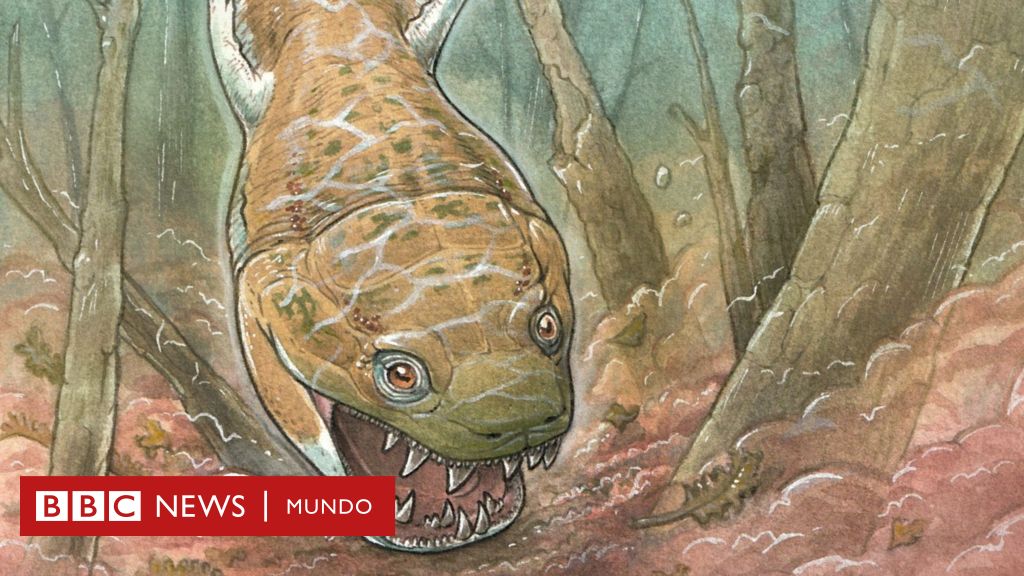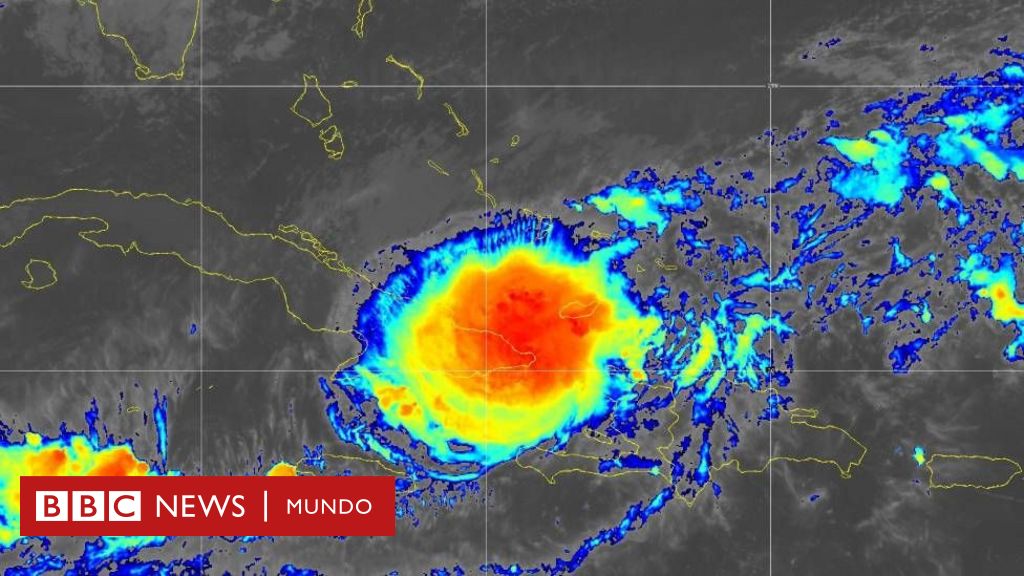'Hellish Salamander': Discovery of the Giant Animal That Ruled the Earth Before the Dinosaurs

Image source, Reuters
- author, Drafting
- Role, BBC World News
Forty million years before the first dinosaurs appeared on Earth, a ferocious predator roamed the prehistoric swamps.
It reaches two metres in length, and its massive skull, more than half a metre long, contains a mouth with long, interlocking fangs that act as a suction device to devour its prey.
It's about Jayasia GenaiThe fossil was recently discovered in Namibia and was described by scientists in an article in the specialized journal Nature as: Giant salamander with flat toilet-shaped head.
“This creature could accurately be called the ‘hellish salamander,’” commented science journalist Paul Smaglic, in a Discover magazine article about the discovery.
The fossil is named after the Jay-S Formation in Namibia, where it was discovered, and in honor of Jenny Clack, a paleontologist who specializes in the evolution of the first tetrapods, the four-legged vertebrates that evolved from lobe-finned fishes that were the ancestors of amphibians, reptiles and mammals.
“We found this huge specimen lying like a frozen giant on a rocky outcrop. It was really shocking,” said Claudia Marsicano, of the University of Buenos Aires, co-leader of the investigation team. “As soon as I looked at it I knew it was something completely different. We are all very excited,” the paleontologist said.
Image source, Gabriel Liu/Reuters
The team found several specimens, including one containing a well-preserved skull and detailed spine.
“After examining the skull, the frontal skeleton caught my attention. “It was the only part visible at the time and showed very large and unusual interlocking fangs, which would have resulted in a strange bite for a proto-tetrapod.”
Jason Pardo, a postdoctoral researcher at the Field Museum in Chicago and co-author of the paper, explained that The shape of the head and jaw allows it to open its mouth and suck in its prey.“We have some really cool material, including a complete skull that we can use to compare with other animals from this era and understand what this animal was like and what makes it unique.”
“The new, exceptionally large aquatic tetrapod provides important information about the tetrapods that inhabited the high latitudes of Gondwana,” Marsicano added, referring to the polar regions of the prehistoric land mass.
Image source, Claudia A. Marsicano
old ancestor
Although Namibia is today just north of South Africa, 300 million years ago it was much farther south, near the 60th parallel, roughly at the northernmost point of modern Antarctica. At that time, the Earth was approaching the end of an ice age.
The swamps near the equator were drying up and becoming more forested, but near the poles, the swamps remained, perhaps alongside ice patches and glaciers.
In warmer, drier parts of the world, animals evolved into new forms. The first four-legged vertebrates, called tetrapods, branched off into lineages that would one day become mammals, reptiles, and amphibians. But And on the margins, in places like what is now Namibia, the ancient forms persisted..
“It's really amazing. Jayasia “It’s very old,” Pardo commented. “It was related to organisms that probably went extinct 40 million years ago.” Jayasia It looks like it's in pretty good shape, maybe. The main predator of its ecosystem..
The truth we found Jayasia “The farther south it tells us there was a thriving ecosystem that could support these large predators. The more we look, the more answers we will find about these important animal groups that matter to us, like the ancestors of modern mammals and reptiles.”
Remember that you can receive notifications in our app. Download the latest version and activate it.

“Bacon advocate. Certified creator. Twitteraholic. Tv junkie. Beer fanatic. Internet nerd. Passionate thinker. Reader.”






